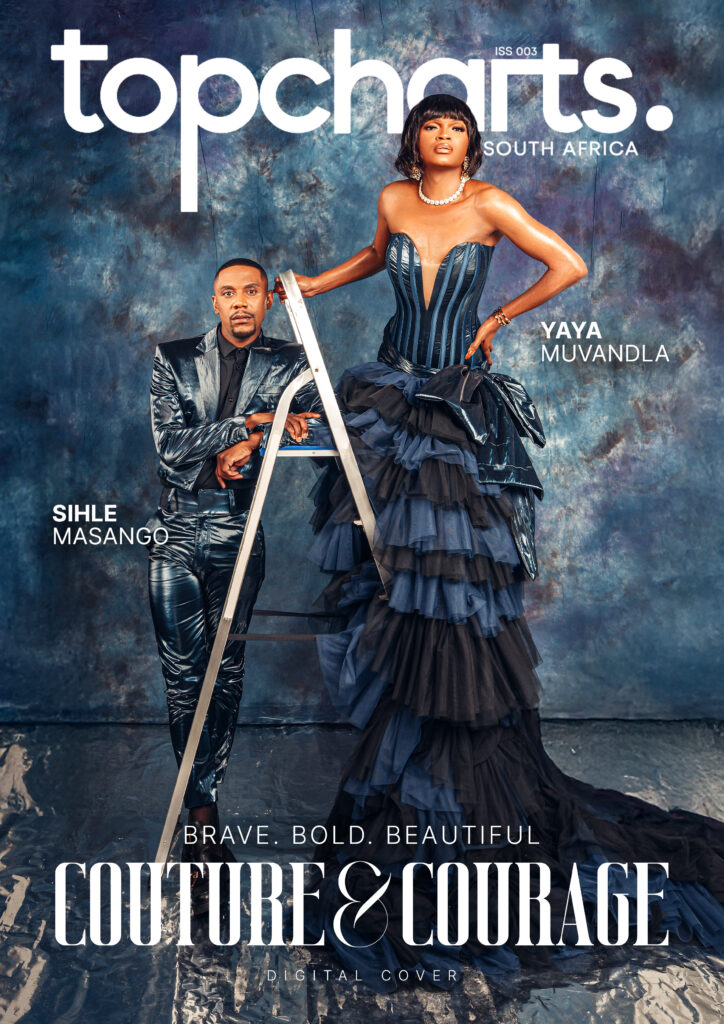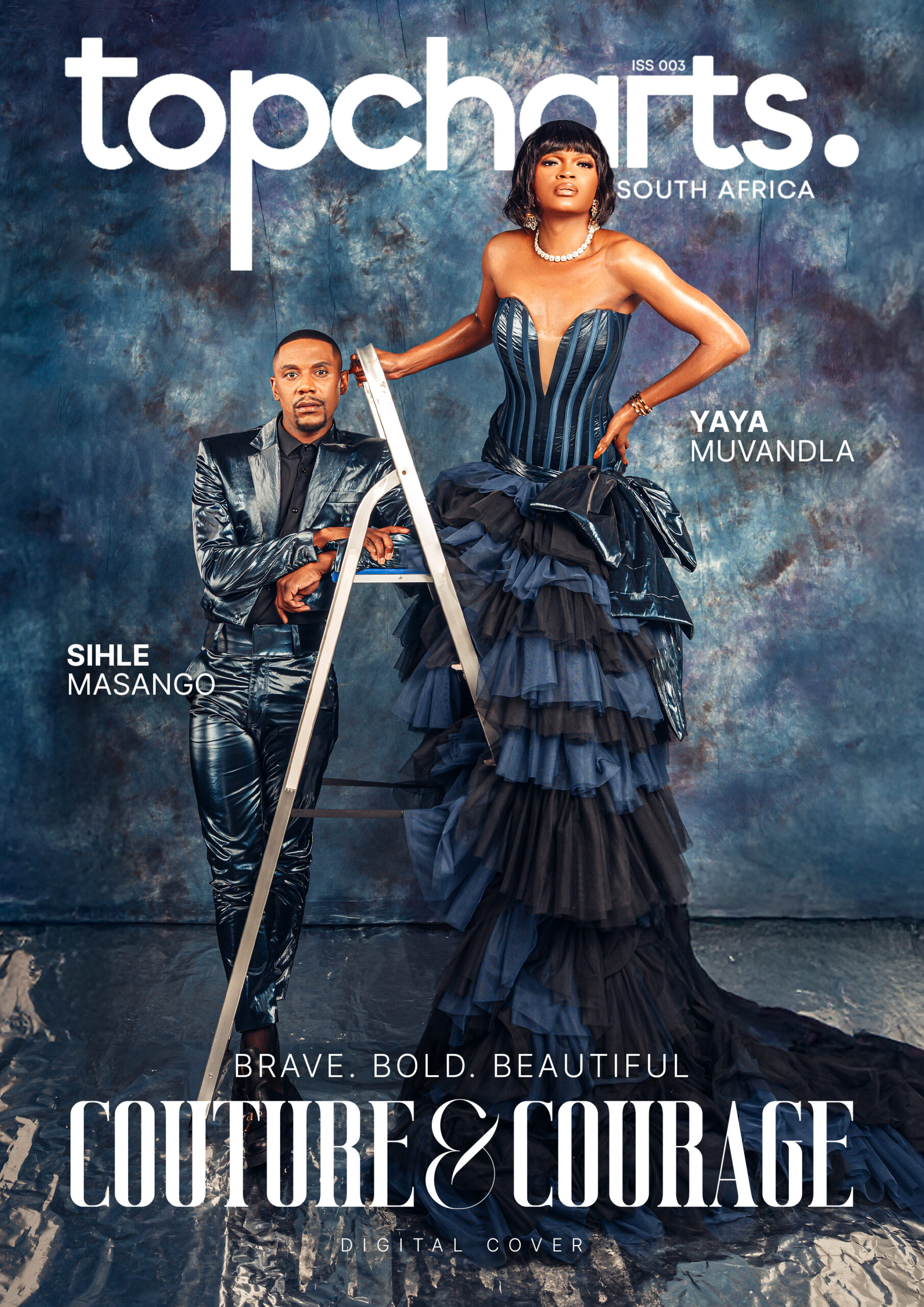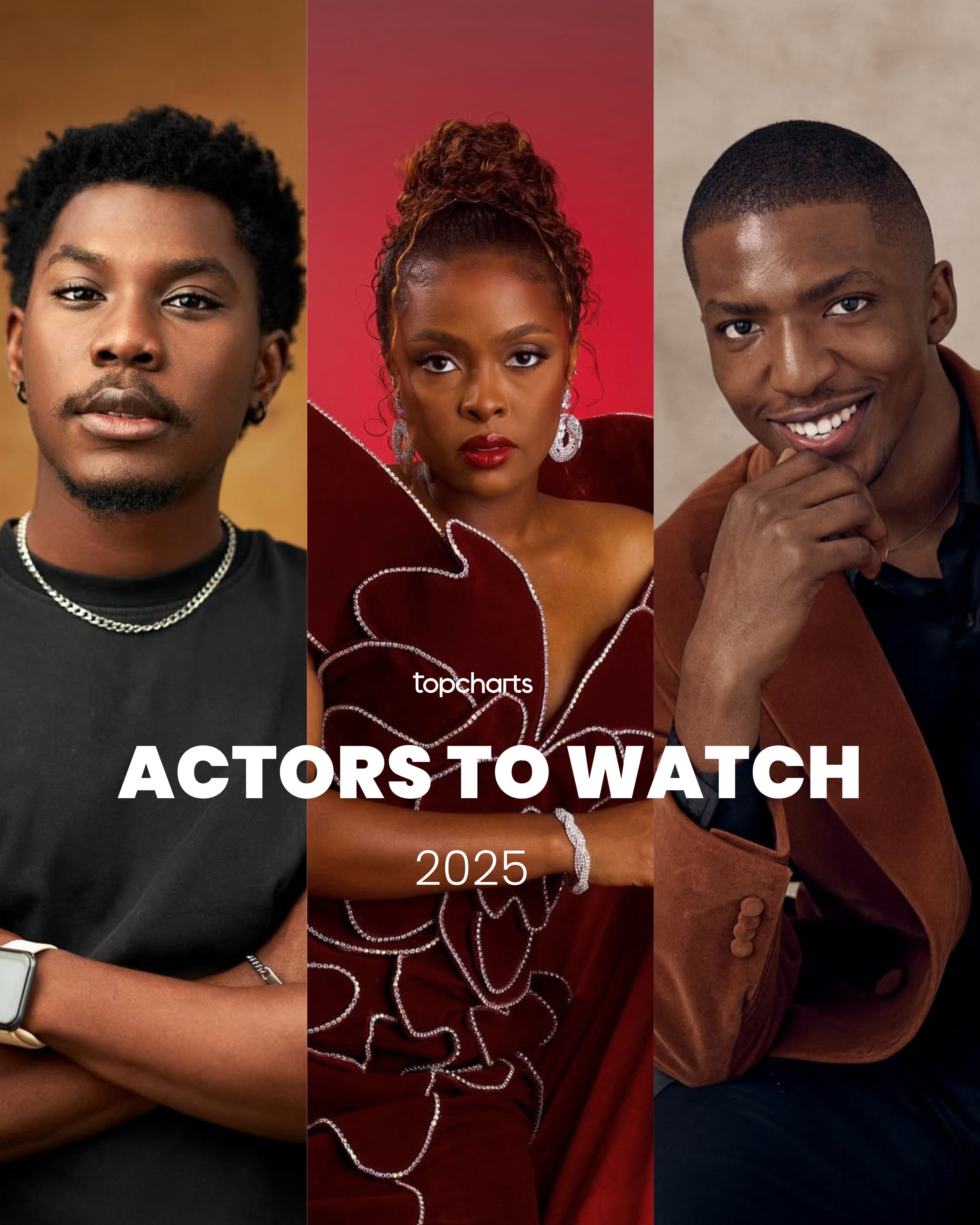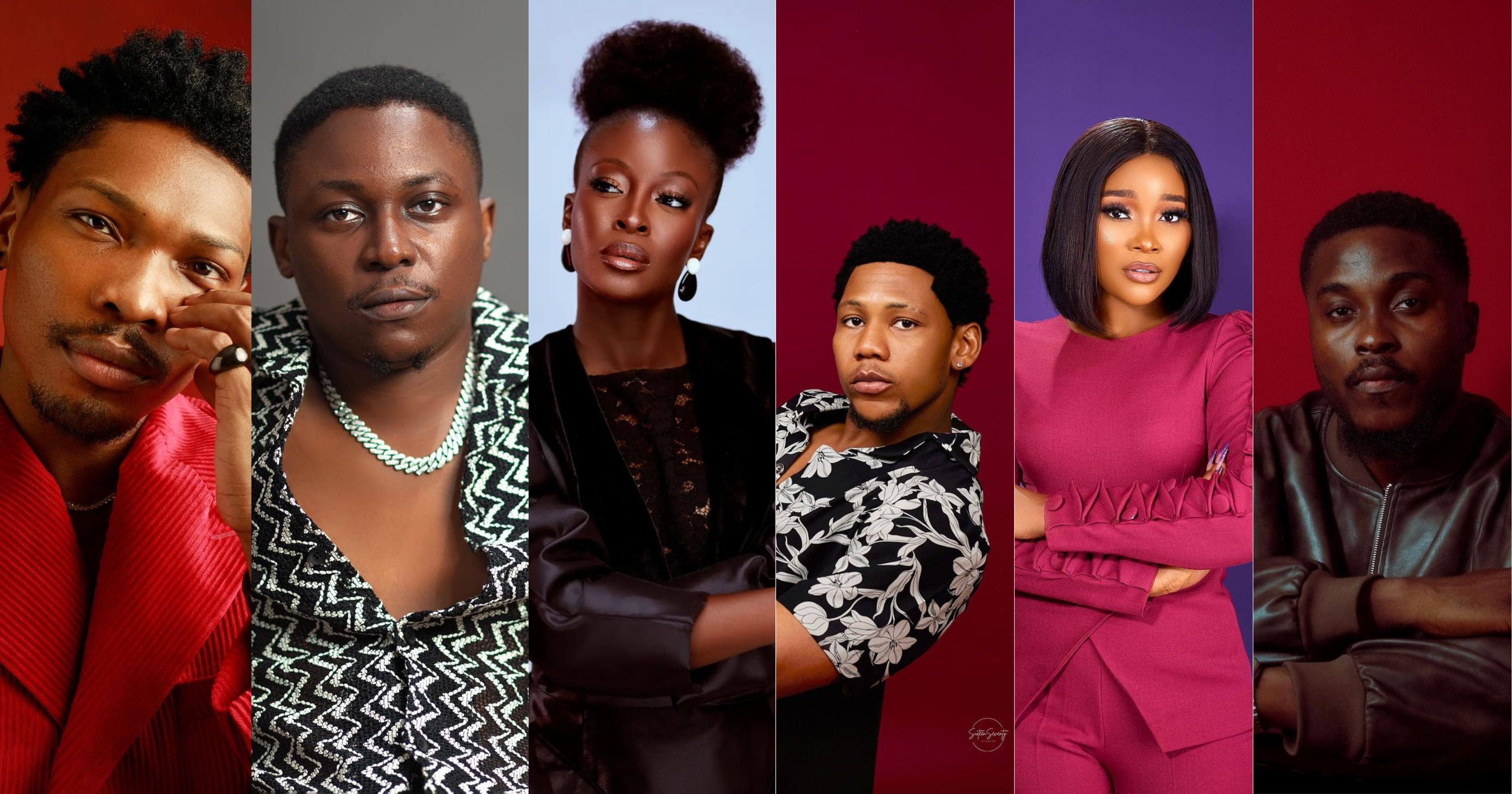
They arrive not as icons, but as revelations Yaya Mavundla and Sihle Masango, two singular forces in South African fashion who remind us that the runway is more than just a stage: it’s a scripture.
In them, South Africa finds not just fashion leaders, but visionaries reshaping the conversation around elegance, identity, and the architecture of self. They are stylists of memory, drapers of legacy, architects of disruption, and above all, they are embodiments of what this moment demands: Couture and Courage.

Sihle Masango moves with the precision of a sculptor and the daring of a poet. His
garments are not just clothes they are declarations. In the pearl-drenched majesty of “Iphondo Elibomvu” or the kinetic rebellion of the “African Cowboy” series, every seam is a sentence. “A cowboy jacket’s sweeping fringe is emotional untamed, kinetic while its structuring seams are architectural,” he says. For Masango, maximalism is not indulgence. It is discipline. It is softness worn militantly, defiantly. “Maximalism for me is militant softness,” he explains. “It’s refusing to conform to a narrative that tells Black men to minimize feeling.”
And then there is Yaya.

Yaya Mavundla wears fashion like it’s a country she has conquered not by force, but by presence. “That will have to be the David Tlale dress I wore at the SAFTAs in 2014,” she recalls when asked about the first outfit that made her feel invincible. “It changed how I viewed high-end fashion.” But Yaya does not just remember fashion. She reimagines it. Her journey has taken her from gowns that whispered resilience to
garments that shouted protest. At the 2021 Feather Awards, she wore a dress stitched
with headlines of transphobic violence a high-fashion manifesto. “I don’t just want to
look beautiful. I want my beauty to speak for the silenced.”

Their shared definition of beauty has evolved beyond the visible. “A decade ago, I
chased a universal ideal perfect proportions, flawless execution,” Sihle admits. “Today I understand that true beauty lives in specificity.” For Yaya, beauty is self-made: “How you see yourself, be happy that is beauty, not what people tell you.”
Fashion has not only adorned them it has shaped them. “Fashion gave me the power to be,” Yaya says. “It healed me.” Still, she has tasted betrayal. The silence of designers who only call for inclusion optics. The heartbreak of arriving at an event in her best look and realizing the space was never built with her in mind. “I was so embarrassed. I called my friend Khosi Twala and went home to change.”
Sihle, too, has felt both the embrace and the neglect of the industry. “Collaboration lives
in the handshake between designer and wearer’s vulnerability,” he says. “Ego says ‘I know best,’ empathy says, ‘Tell me your story.’”

They are deeply aware of fashion’s dual status as expression and exclusion. While both note the rise in bold storytelling through design, from township prints to queer narratives, they also critique what remains stuck. “Infrastructure lags,” Sihle warns. “ We still struggle against a colonial blueprint that tells us to export our heritage as novelty rather than elevate it as innovation.”
Yaya adds: “Consumers are leaning into fast fashion out of survival. But what’s local, what’s handmade it’s being forgotten. We need government intervention. Urgently.”

Yet despite the obstacles, both imagine a transformed future. “Imagine African ateliers humming with advanced looms,” Sihle envisions, “local dyers pioneering global colour trends, artisans teaching digital-fabrication labs.”
Yaya’s dream is bolder still: “Those who see me call me the blueprint and trailblazer.
That was never my dream. Now that it’s here, I want to be part of the reason the
history books are amended and have everyone seen and celebrated.”

And if they could speak to the child within? Yaya doesn’t flinch. “You are not watching
a story. You are the story. Be glad you never changed. The best part is still becoming.”
Sihle would kneel, gently. “Keep your hands busy and your heart open,” he’d whisper.
“Every odd idea in your sketchbook every lopsided fringe, every wild colour gradient is
exactly the kind of daring the world needs.”
They aren’t merely dressing bodies they’re dressing eras. In silk and fringe, in pearl and
pigment, they remind us what it means to wear memory, to drape revolution, to tailor the future.
This is couture! And this is courage!

Written by: Kehinde Adesokan Akinloluwa









